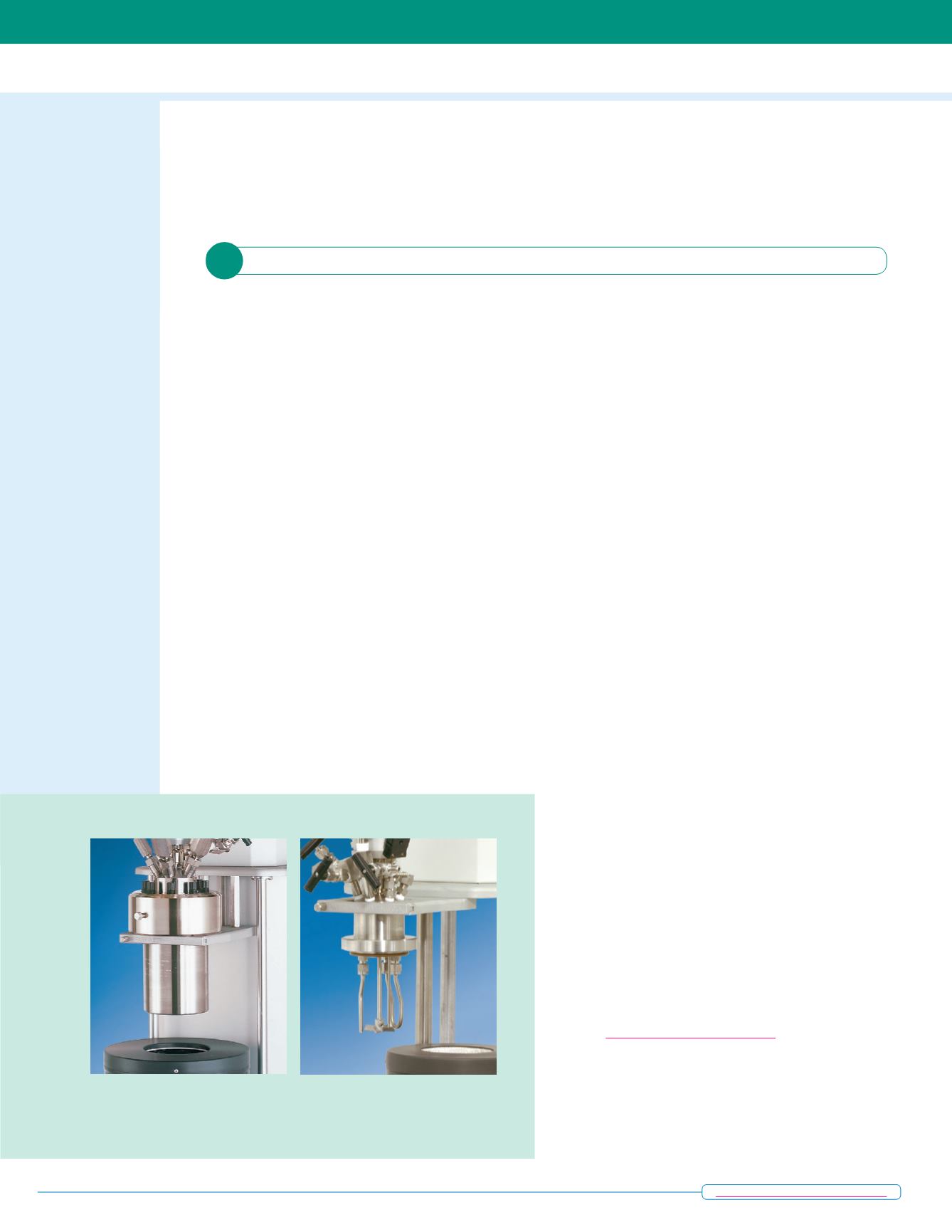
24
P a r r I n s t r u m e n t C o m p a n y
Reactor Selection Procedure
It is possible to
convert most of
these reactors from
one size to another
within the same
series. This is done
by substituting a
longer or shorter
cylinder with
corresponding
internal fittings
including the stirrer
shaft, thermowell or
thermocouple, dip
tube and cooling
coil (if installed).
In some cases, the
heater will also
need to be changed.
The Parr Technical
Service department
will be happy to
provide a list of
the appropriate
conversion parts for
any contemplated
conversion.
“
”
1. Maximum Operating Pressure
Parr offers a number of operating pressures.
Vessels 600mL and under in volume are typically
rated for 3000 psi, and vessels 1L or larger are
typically rated for 1900 psi. We also offer 5000
psi versions of these sizes for those who need
this combination of smaller size and higher
pressure. Some pressure limits can be increased
with custom designs. However, higher pressure
vessels generally require thicker walls, which
can make temperature control more difficult, and
larger volume, high pressure vessels are heavier
and more difficult to handle. We also have a line
of 5100 Series Glass Reactors which can handle
up to 150 psi with a glass cylinder or up to 1000
psi with a metal cylinder.
2. Maximum Operating Temperature
Traditionally, the choices here have been up
to 350 °C for vessels with PTFE gaskets and up
to 500 °C for flexible graphite (previously metal
gaskets). Parr added the option of a self-sealing
O-ring closure for general purpose vessels over
a full range of volumes. These quick closing
designs are limited to 225 °C, although this can
be raised to 275 °C with special O-ring materials.
Moveable and Fixed Head Designs
1
Establish 4 Basic Specifications
T
he selection process starts with establishing
the Four Basic Specifications discussed be-
low. Having set these requirements, the user can
then identify a suitable series group from the
3. Vessel Size
Parr stirred reactors are offered in many sizes
ranging from 25mL to 18.75 liters (5-gallon). It
should be noted that these volumes refer to the
free space in the vessel, and for safe operation
the maximum liquid charge held in the vessel
should not exceed two-thirds of the available
free space in sealed batch operations. Generally,
several vessel volumes are offered within most
series, and reactor sizes can be reconfigured
with conversion parts.
4. Material of Construction
Parr reactors are normally made of Type 316
Stainless Steel, but they can be made of other
alloys as well.
The list of available construction materials
includes:
Type 316/316L Stainless Steel
Alloy 20
Alloy 400
Alloy 600
Nickel 200
Titanium
Alloy B-2
Alloy C-276
Zirconium Grades 702 & 705
Other materials may be available upon
request.
The majority of organic reactions can
be handled in a standard T316 Stainless Steel
vessel, but other corrosion resistant alloys are
available to provide vessels suitable for use with
a wide range of corrosive acids, bases, salts and
gases. Special alloy construction can be provided
for both the internal parts of the vessel and the
external valves and fittings. However, there are
considerable cost savings if the user can accept
standard external parts made of stainless steel
instead of a special alloy.
There is more detailed information on special
materials in the “Materials of Construction” sec-
tion of Chapter 1 on pages 10-11 of this catalog.
A moveable head is best for when
you need to remove the entire reac-
tor in one piece after running your
operation.
A fixed head allows you to remove
the cylinder and leave the head and
all of its attachments mounted to
the stand.
Guide to Parr Stirred Reactors. The user should
then review the standard fittings. Finally, a list
of Secondary Specifications should determine
some of the finer details of the system.


